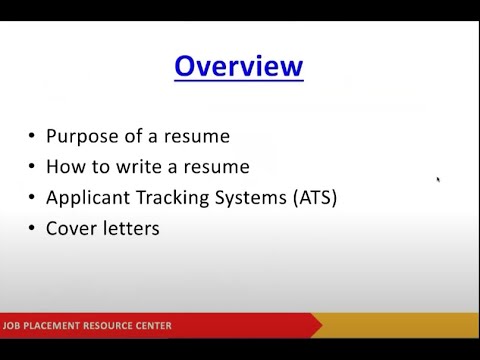How Long-Term Assisted Living Can Be Covered by Medicaid
Contents [show]
If you or a loved one are considering long-term care in an assisted living facility, you may be wondering how to finance this type of care. Medicaid can be a great resource for covering the costs of long-term care, but there are some requirements that must be met in order for Medicaid to provide coverage. In this blog post, we’ll explain how long-term care in an assisted living facility can be covered by Medicaid.
Checkout this video:
Medicaid and long-term care
Medicaid is a government insurance program that pays for long-term care for low-income individuals. Long-term care includes services such as nursing home care, home health care, and personal care.
In order to be eligible for Medicaid, an individual must meet certain income and asset requirements. In most states, an individual must have an income below a certain level in order to qualify. In addition, an individual’s assets must be below a certain level in order to qualify.
Some states have Medicaid programs that cover long-term care for individuals who do not meet the income and asset requirements. These programs are called ” Medicaid waiver programs.” Waiver programs vary from state to state, so it is important to check with your state’s Medicaid office to see if you are eligible.
If you are interested in finding out more about Medicaid and long-term care, there are a number of resources available. The National Center for Assisted Living has information on their website about Medicaid and long-term care. In addition, the Centers for Medicare and Medicaid Services has a website with information about all aspects of Medicaid.
Long-term care options
There are a number of long-term care options available for seniors, including assisted living. Medicaid can help cover the costs of assisted living in some cases, but it’s important to understand the requirements and restrictions before making any decisions.
Medicaid is a government-funded health insurance program that is available to low-income individuals and families. In some states, Medicaid will cover the costs of assisted living for seniors who meet certain requirements. However, each state has different rules about what is covered and how much coverage is available.
To be eligible for Medicaid coverage of assisted living, seniors must first need help with activities of daily living, such as eating, bathing, dressing, and using the restroom. They must also be unable to live safely on their own or in an unlicensed facility.
In some states, Medicaid will only cover the costs of assisted living if it is considered medically necessary. This means that a doctor or other health care professional must determine that assisted living is the best option for the senior’s health and well-being.
It’s important to note that Medicaid does not cover the costs of all long-term care services. For example, it does not typically cover nursing home care or in-home care services. And in some states, there may be waiting lists for Medicaid-funded assisted living facilities.
If you’re considering long-term care options for yourself or a loved one, be sure to research all of your options and understand how Medicaid can (or cannot) help cover the costs.
How to pay for long-term care
There are several ways to pay for long-term assisted living, including private insurance, out-of-pocket expenses, and government programs like Medicaid. Medicaid is a needs-based program that provides coverage for certain medical and long-term care services. In order to qualify for Medicaid, you must meet certain income and asset requirements.
If you have private insurance, check with your insurer to see if they cover assisted living costs. Some policies will cover a portion of the cost, while others will not cover any costs associated with assisted living. If you are paying for assisted living out of pocket, be sure to research different facilities to find one that fits your budget.
Government programs like Medicaid can help cover the cost of long-term care in an assisted living facility. To be eligible for Medicaid coverage, you must meet certain income and asset requirements. If you have private insurance, check with your insurer to see if they cover assisted living costs. Some policies will cover a portion of the cost, while others will not cover any costs associated with assisted living.
Medicaid and assisted living
Long-term care in an assisted living facility can be expensive, but there are programs that can help cover the costs. Medicaid is a government-sponsored health insurance program that provides coverage for medical and long-term care services for low-income individuals and families. Medicaid can help cover the costs of assisted living for those who qualify.
To qualify for Medicaid coverage of assisted living, individuals must first meet the program’s financial requirements. In general, Medicaid requires individuals to have limited assets and income in order to qualify. Once an individual qualifies financially, they must also meet the program’s non-financial requirements, which vary by state.
In some states, Medicaid will only cover assisted living costs if the individual requires a certain level of care, such as help with activities of daily living (ADLs) or nursing care. In other states, Medicaid will cover assisted living costs regardless of the level of care required.
Medicaid coverage of assisted living is not unlimited. Most states limit the number of days or months that Medicaid will cover the cost of assisted living. Once an individual has reached their limit, they may be responsible for paying for their own care.
Medicaid is a complex program with many rules and regulations. If you think you or a loved one may be eligible for coverage of assisted living costs through Medicaid, it’s important to speak with an experienced professional who can help you navigate the program and make sure you get the coverage you need.
Assisted living and long-term care
Assisted living is a type of long-term care that can be covered by Medicaid. Medicaid is a joint federal and state program that helps pay for medical and long-term care for low-income Americans. In most states, Medicaid will cover some or all of the cost of assisted living for eligible people.
To be eligible for Medicaid coverage of assisted living, you must meet your state’s financial and medical requirements. You will also need to find an assisted living facility that accepts Medicaid payments.
Assisted living can provide many benefits for those who need long-term care. It can help you stay independent and allow you to age in place. It can also provide social and recreational activities, as well as access to support services like transportation and meals.
If you are considering moving into an assisted living facility, be sure to research your options and understand all the costs involved. Medicaid can help you cover the cost of long-term care, but it is important to know what your coverage will cover before making any decisions.
How to pay for assisted living
There are a number of ways to pay for assisted living, but one of the most common is through Medicaid. Medicaid is a government-funded health insurance program that covers low-income adults and families. In some states, Medicaid will cover the costs of long-term care in an assisted living facility.
To be eligible for Medicaid coverage of assisted living, you must first meet the program’s income and asset requirements. These requirements vary from state to state, but in general, you must have a very low income and few assets to qualify. Once you qualify for Medicaid, the program will pay for a certain amount of your assisted living costs every month.
If you do not qualify for Medicaid, there are other options to pay for assisted living. You can use private health insurance long-term care insurance, or personal savings. You can also look into government programs like Veterans Affairs benefits or state-funded programs like California’s Assisted Living Waiver Program.
Medicaid and nursing homes
There are many misconceptions about Medicaid and nursing homes. One common myth is that Medicaid only covers short-term stays in nursing homes. However, Medicaid actually covers a wide range of long-term care services, including assisted living.
In order to be eligible for Medicaid coverage of assisted living, you must first meet the program’s income and asset requirements. Once you qualify for Medicaid, you can receive coverage for a limited number of days or months in an assisted living facility. The exact length of coverage will vary from state to state.
In addition to income and asset requirements, Medicaid also has eligibility requirements related to your level of care needs. In order to receive coverage for assisted living, you must need a certain level of care that can only be provided in an assisted living facility. The level of care required will also vary from state to state.
If you think you or a loved one may be eligible for Medicaid coverage of assisted living, contact your state’s Medicaid office to learn more about the program and how to apply.
Nursing homes and long-term care
There are a number of long-term care options available for seniors, but one of the most common is nursing home care. Nursing homes provide around-the-clock care and supervision for residents, and they can be an important option for seniors who can no longer live independently.
However, nursing home care can be very expensive, and many seniors worry about how they will pay for it. Medicaid is a government program that can help cover the costs of nursing home care, but there are eligibility requirements that must be met.
To be eligible for Medicaid coverage of nursing home care, seniors must first exhaust all other insurance options. This includes private health insurance Medicare, and any long-term care insurance policies they may have.Seniors must also meet certain financial criteria to be eligible for Medicaid coverage. In general, seniors must have a very low income and few financial assets to qualify.
Once all of these criteria have been met, Medicaid will cover the costs of nursing home care on a long-term basis. For many seniors, this can mean peace of mind knowing that their care will be covered no matter how long they need it.
How to pay for nursing home care
Most people don’t want to think about the possibility that they may one day need long-term care. Nursing home care can be very expensive, and it is not covered by most health insurance policies or Medicare. Medicaid is a government health insurance program that will pay for nursing home care, but only if you meet certain eligibility requirements.
To be eligible for Medicaid coverage of nursing home care, you must first spend down any assets that you own to below a certain level. This level varies from state to state, but it is typically around $2000. Once you have spent down your assets, you can apply for Medicaid coverage. Medicaid will then pay for your nursing home care up to a certain limit.
If you are married, your spouse may still be able to keep some of your assets and still be eligible for Medicaid coverage. This is called “spousal impoverishment protection.” Each state has its own rules about spousal impoverishment protection, so you will need to check with your state’s Medicaid office to find out what the rules are in your state.
If you are thinking about going into a nursing home, it is a good idea to talk to an elder law attorney in your state about your options for paying for nursing home care.
Other long-term care options
There are several types of long-term care, and each one has different covered services, eligibility requirements, and costs. Here are some of the most common types of long-term care:
– skilled nursing facility care
– home health care
– hospice care
– adult day care
– personal care services
Each state has different Medicaid rules for long-term care. In some states, Medicaid will pay for long-term care in any setting (including your home, a community setting like an assisted living facility, or a nursing home). In other states, Medicaid will only pay for long-term care in a nursing home.
You can use this tool to find out if your state pays for long-term care in an assisted living facility: https://www.medicaid.gov/medicaid-chip-program-information/by-topics/long-term-services.html#2_5
If your state does not have a program that covers assisted living, you may be able to get coverage through a waiver program. A waiver program is when Medicaid pays for services that are not usually covered by Medicaid. Each state has different waiver programs, and each program has different eligibility requirements. To find out if your state has a waiver program that covers assisted living, contact your state’s Medicaid office.







